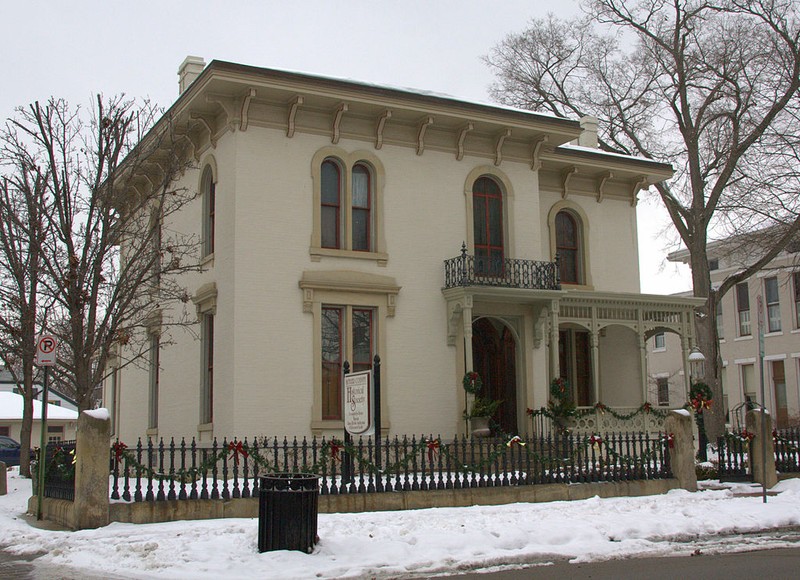Benninghofen House
Introduction
Text-to-speech Audio
Images
The Benninghofen House was built between 1861-1863 for Noah McFarland. It came into the Benninghofen family's possession in 1874. The house was presented to the Butler County Historical Society by Pauline Benninghofen.

Backstory and Context
Text-to-speech Audio
Although they were not the first to live within the home, the Benninghofen House is named after the family who resided there for almost three-fourths of a century. The house was initially built for Noah McFarland from 1861-1863. The home was then sold to Major John Phillips. Phillips defaulted on his tax payments lost the home. A Prussian immigrant named John Benninghofen bought the home in 1874 for $13,000.
Of the industrialist in Hamilton, John Benninghofen was near the top. He and Asa Shuler ran the Shuler & Benninghofen Woolen Mills. Blankets and woolen felt that was used in the local papermaking market were produced here. By the late 1800s, 80% of the felt used in Western paper mills came from Shuler & Benninghofen.
Because the house remained lived in until it became a museum in 1949, most of the original architectural elements are still there. The house and its furniture provide a display of what homes were like during the Guilded Age. The furniture of the home dates back to the mid-nineteenth and twentieth century. Many of these remaining pieces belonged to the Benninghofen family.
The Benninghofen House has been placed on the National Register of Historic Places. In 1947 Pauline Benninghofen, the daughter of John Benninghofen, presented the house to the Butler County Historical Sociey. A great amount of interior renovating and other projects to the home have been made possible through kind contributions to the 50th Anniversary Fund.
